
How to Use MCP4151-502E/P: Examples, Pinouts, and Specs
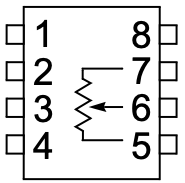
 Design with MCP4151-502E/P in Cirkit Designer
Design with MCP4151-502E/P in Cirkit DesignerIntroduction
The MCP4151-502E/P is a digital potentiometer manufactured by Microchip Technology. It features a 5kΩ total resistance value and a 256-position wiper, allowing for fine-grained control of resistance in electronic circuits. The device communicates via an SPI (Serial Peripheral Interface) protocol, making it easy to integrate with microcontrollers and other digital systems.
This component is widely used in applications such as:
- Volume control in audio systems
- Sensor calibration
- Signal conditioning
- Adjustable gain control in amplifiers
- Programmable voltage dividers
Its compact design and precise resistance adjustment capabilities make it a versatile choice for both hobbyist and professional projects.
Explore Projects Built with MCP4151-502E/P
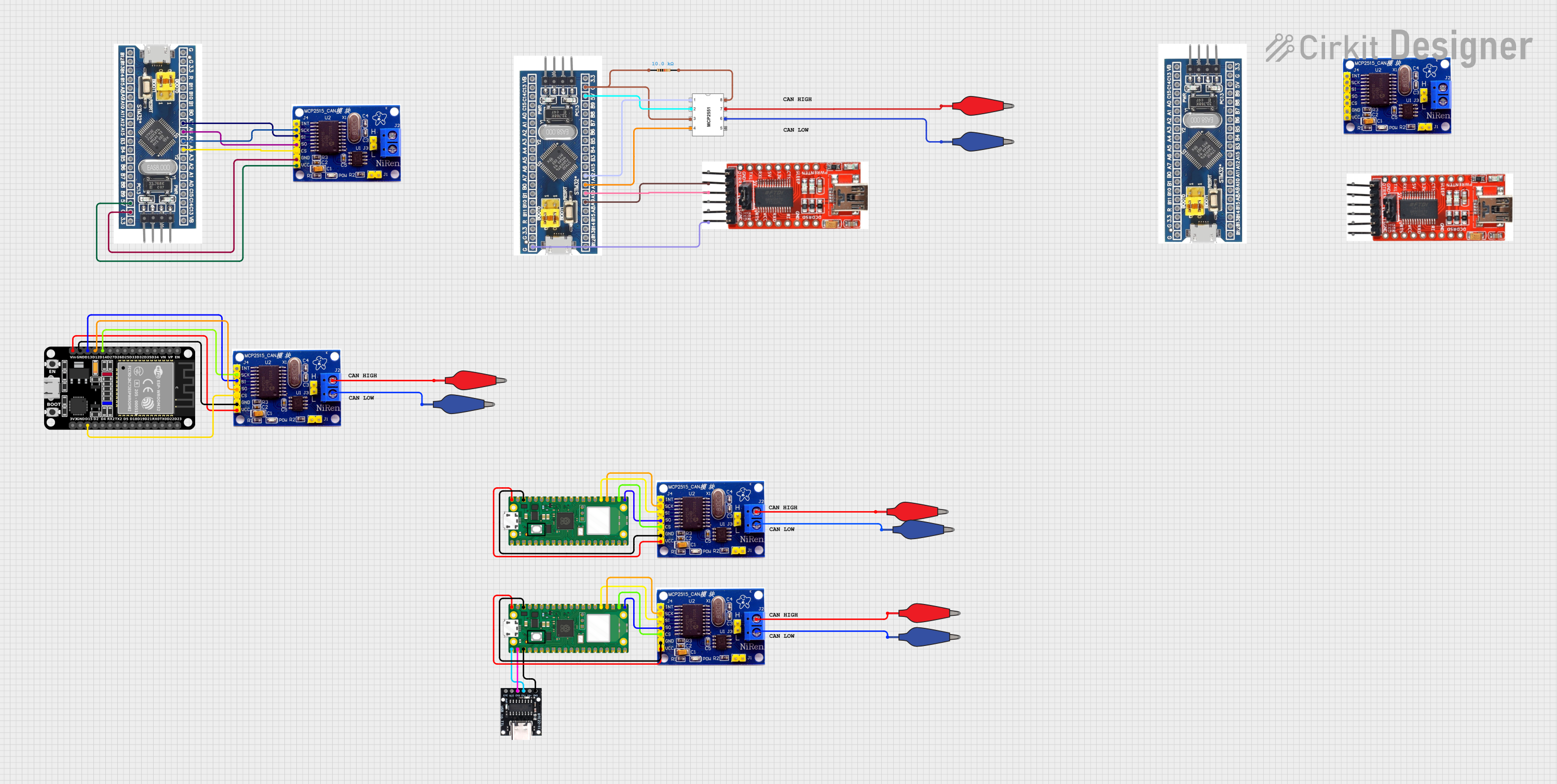
 Open Project in Cirkit Designer
Open Project in Cirkit Designer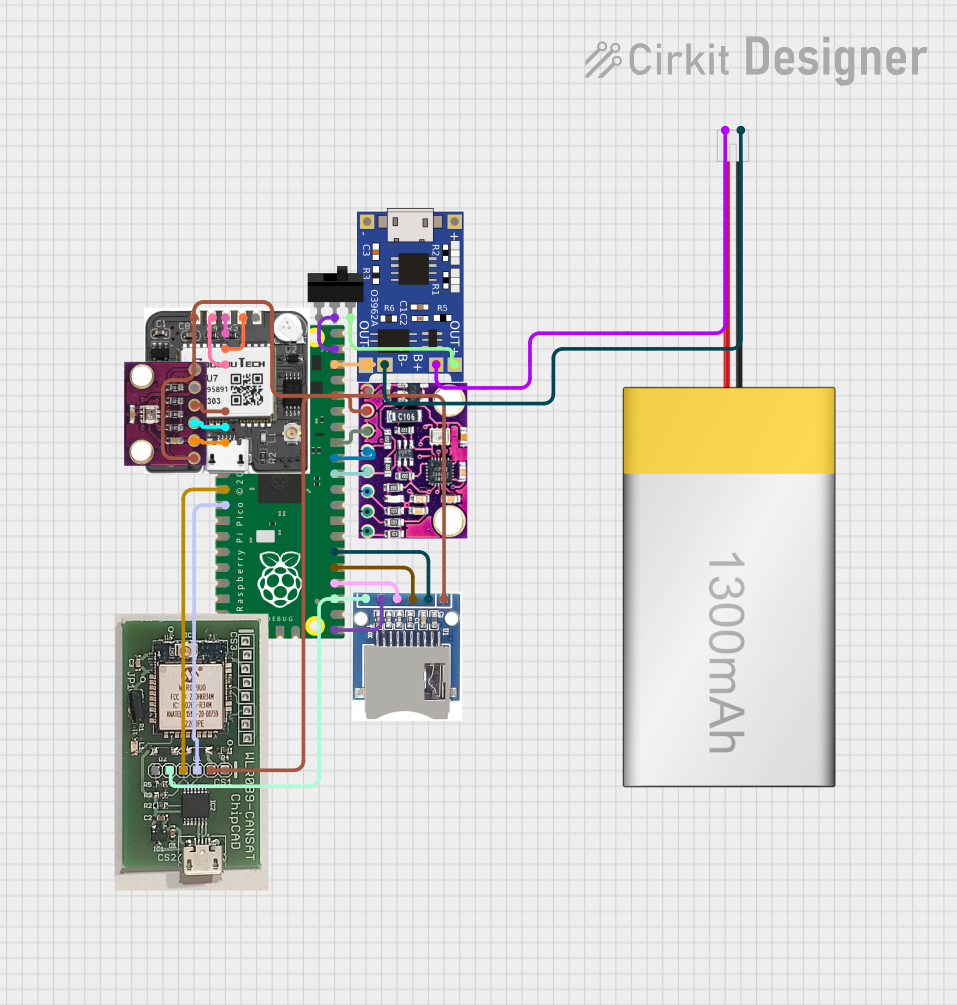
 Open Project in Cirkit Designer
Open Project in Cirkit Designer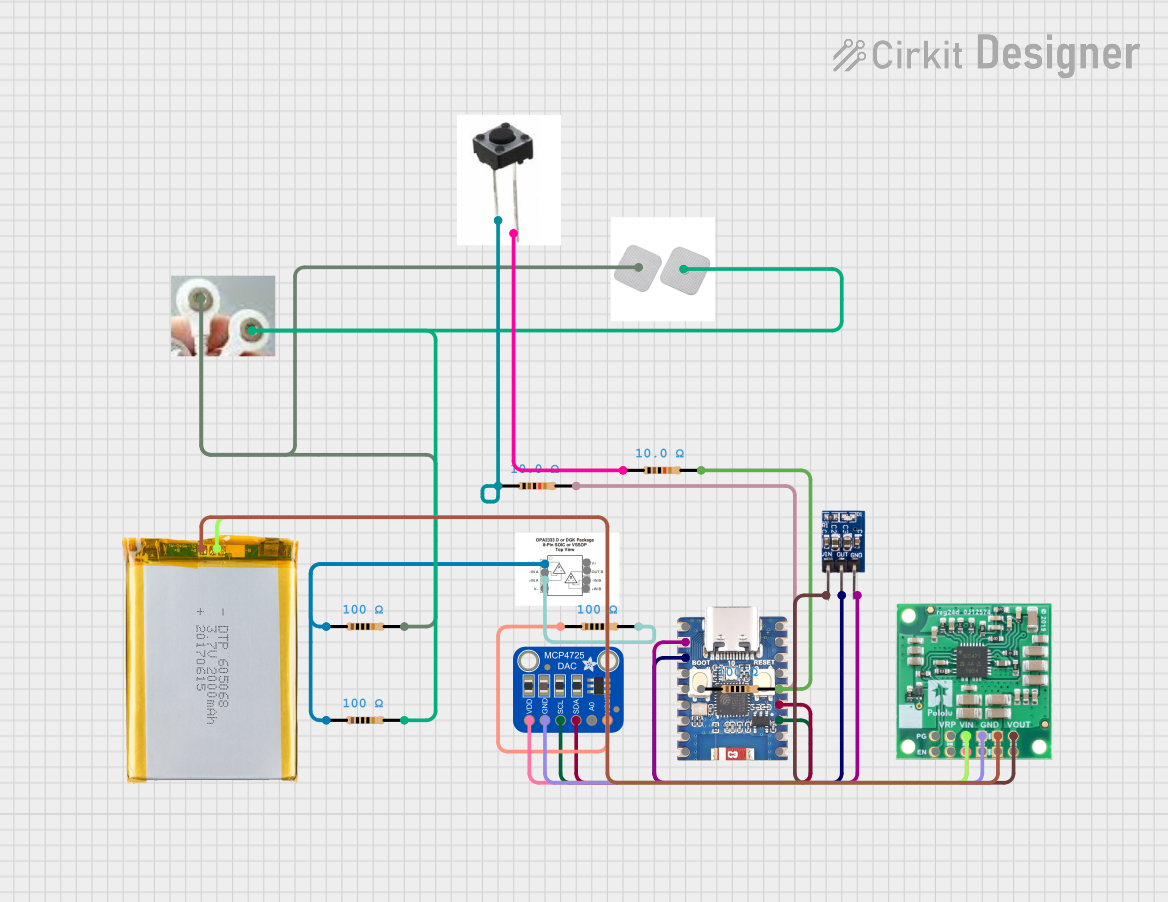
 Open Project in Cirkit Designer
Open Project in Cirkit Designer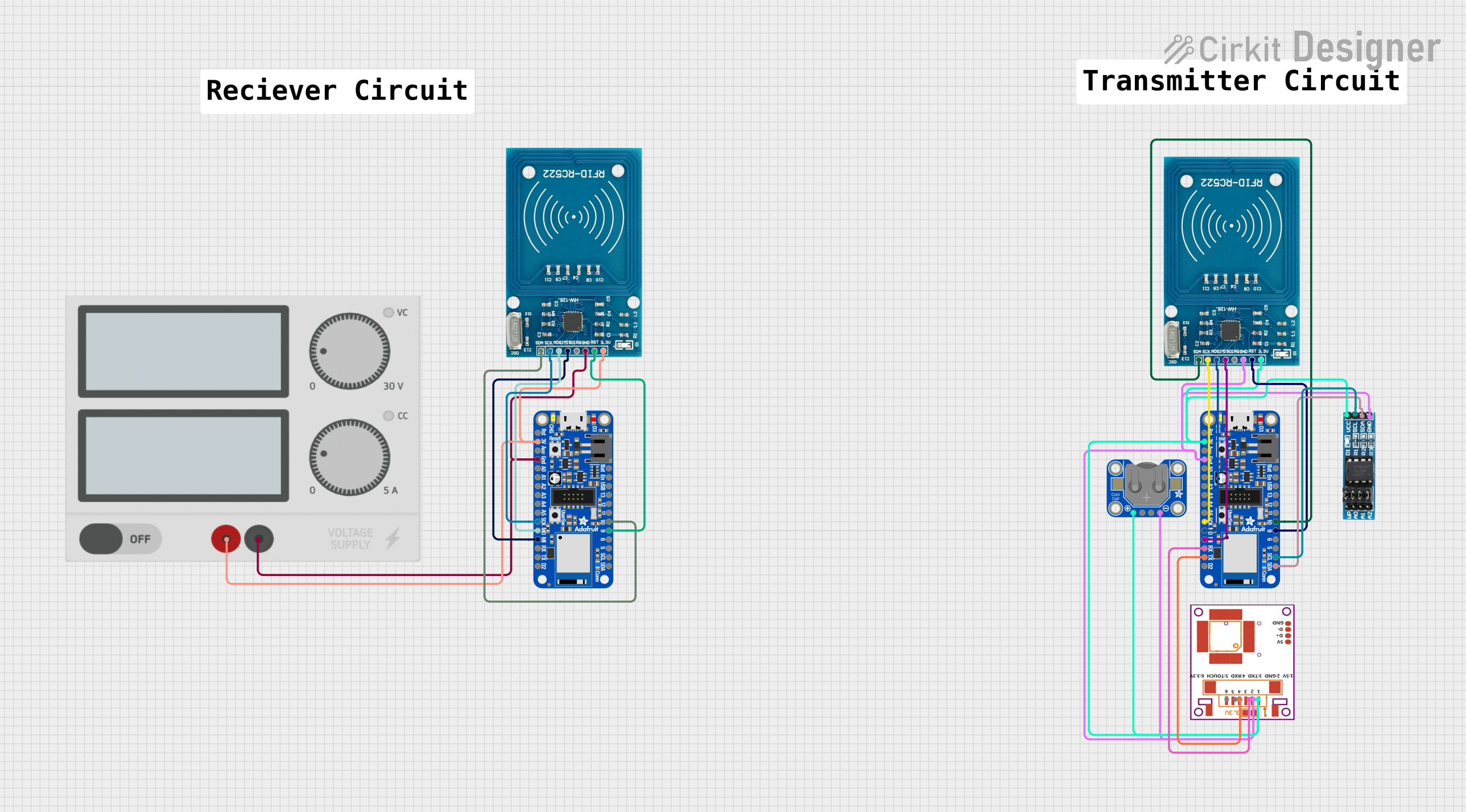
 Open Project in Cirkit Designer
Open Project in Cirkit DesignerExplore Projects Built with MCP4151-502E/P

 Open Project in Cirkit Designer
Open Project in Cirkit Designer
 Open Project in Cirkit Designer
Open Project in Cirkit Designer
 Open Project in Cirkit Designer
Open Project in Cirkit Designer
 Open Project in Cirkit Designer
Open Project in Cirkit DesignerTechnical Specifications
Key Specifications
| Parameter | Value |
|---|---|
| Manufacturer | Microchip Technology |
| Part Number | MCP4151-502E/P |
| Resistance Value | 5kΩ |
| Wiper Positions | 256 |
| Communication Interface | SPI (Serial Peripheral Interface) |
| Supply Voltage (VDD) | 2.7V to 5.5V |
| Maximum Current (I_Wiper) | ±2.5mA |
| Operating Temperature Range | -40°C to +125°C |
| Package Type | PDIP-8 |
Pin Configuration
The MCP4151-502E/P is an 8-pin device. The pinout and descriptions are as follows:
| Pin Number | Pin Name | Description |
|---|---|---|
| 1 | CS | Chip Select: Activates the SPI communication when pulled low. |
| 2 | SCK | Serial Clock: Clock signal for SPI communication. |
| 3 | SDI | Serial Data Input: Data input for SPI communication. |
| 4 | VSS | Ground: Connect to the system ground. |
| 5 | PW0 | Terminal 0 of the potentiometer. |
| 6 | PW1 | Terminal 1 of the potentiometer. |
| 7 | VW | Wiper Terminal: Adjustable output terminal of the potentiometer. |
| 8 | VDD | Power Supply: Connect to a voltage source (2.7V to 5.5V). |
Usage Instructions
How to Use the MCP4151-502E/P in a Circuit
- Power Supply: Connect the VDD pin to a stable voltage source (2.7V to 5.5V) and the VSS pin to ground.
- SPI Communication:
- Connect the CS, SCK, and SDI pins to the corresponding SPI pins on your microcontroller.
- Ensure the SPI clock speed does not exceed 10MHz.
- Potentiometer Terminals:
- Connect PW0 and PW1 to the desired circuit points where the resistance needs to be adjusted.
- The VW pin provides the adjustable wiper output.
- Programming the Wiper:
- Use SPI commands to set the wiper position (0 to 255). Each step corresponds to approximately 19.6Ω (5kΩ ÷ 256).
Important Considerations
- Power-Up State: On power-up, the wiper position defaults to mid-scale (position 128).
- SPI Configuration: Ensure the SPI mode is set to Mode 0 (CPOL = 0, CPHA = 0).
- Current Limitation: Do not exceed the maximum wiper current of ±2.5mA to avoid damaging the device.
- Bypass Capacitor: Place a 0.1µF ceramic capacitor close to the VDD pin to stabilize the power supply.
Example: Using MCP4151-502E/P with Arduino UNO
Below is an example of how to control the MCP4151-502E/P using an Arduino UNO:
#include <SPI.h>
// Define MCP4151 pins
const int CS_PIN = 10; // Chip Select pin connected to Arduino pin 10
void setup() {
// Initialize SPI communication
SPI.begin();
pinMode(CS_PIN, OUTPUT);
digitalWrite(CS_PIN, HIGH); // Ensure CS is initially high
}
void loop() {
setWiperPosition(128); // Set wiper to mid-scale (128 out of 256)
delay(1000); // Wait for 1 second
setWiperPosition(64); // Set wiper to 1/4 scale (64 out of 256)
delay(1000); // Wait for 1 second
}
// Function to set the wiper position
void setWiperPosition(byte position) {
digitalWrite(CS_PIN, LOW); // Select the MCP4151
SPI.transfer(0x00); // Command byte: Write to wiper register
SPI.transfer(position); // Data byte: Wiper position (0-255)
digitalWrite(CS_PIN, HIGH); // Deselect the MCP4151
}
Troubleshooting and FAQs
Common Issues
No Response from the MCP4151:
- Ensure the CS pin is correctly toggled (LOW during communication, HIGH otherwise).
- Verify the SPI clock speed is within the 10MHz limit.
- Check all connections, especially the power supply and ground.
Incorrect Wiper Position:
- Confirm the SPI mode is set to Mode 0 (CPOL = 0, CPHA = 0).
- Ensure the data sent to the MCP4151 is within the valid range (0 to 255).
Device Overheating:
- Check that the wiper current does not exceed ±2.5mA.
- Verify the power supply voltage is within the 2.7V to 5.5V range.
FAQs
Q: Can the MCP4151-502E/P be used as a variable resistor?
A: Yes, by connecting one of the fixed terminals (PW0 or PW1) and the wiper (VW), the MCP4151 can function as a variable resistor.
Q: What happens to the wiper position after a power cycle?
A: The wiper position resets to the mid-scale value (position 128) after a power cycle.
Q: Can I use the MCP4151 with a 3.3V microcontroller?
A: Yes, the MCP4151 operates with a supply voltage range of 2.7V to 5.5V, making it compatible with 3.3V systems.
Q: Is the MCP4151-502E/P suitable for audio applications?
A: Yes, its precise resistance adjustment and low noise make it suitable for audio volume control and other signal conditioning tasks.